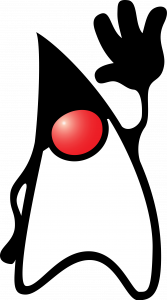Getting Started with Java
Install Java on your machine now and get started with Java today.
Java Flow Control
Java Exception Handling
Intermediate Concepts
- JAR File in Java
- StringBuffer in Java
- StringTokenizer In Java
- Autoboxing and Unboxing
- Object Creation in Java
- Bubble Sort in Java
- Java HashMap
- Java Closure
- Association In Java
- Java Functional Interface
- Java Comparator Interface
- Wrapper Class in Java
- Java Iterator
- Identifiers in Java
- Java File Class
- File Handling in Java
- Java Date and Time
- Packages in Java
- Java Regular Expression
- Multithreading in Java
Java Advanced Concepts
- JDBC Tutorial
- JDBC Connection in Java
- Serialization and Deserialization in Java
- Pair Class in Java
- Java URL Class
- Java Wildcard
- Garbage Collection in Java
- Java Garbage Collection Algorithm
- Island of Isolation in Java
- Java Language Keywords
- POJO Class in Java
- Socket Programming in Java
- Java Generics Tutorial
- Design Patterns in Java
- Java Synchronized Method
- Java Semaphore
- Deadlock in Java
- Convert Colored Image in Java
- Java Image Processing
- Java Frameworks
Comparison
Java Projects
- Java Project Ideas
- Java Project – Compression and Decompression
- Java Project – Develop Real-time Chat Application
- Java Project – Create a Music Player using Java
- Java Project – How to Create Notepad in Java
- Java Project – Online Shopping System using JSPs & Servlets
- Java Project – Tic Tac Toe Game
- Java Project – Encryption Decryption
- Java Project – Time Converter
- Java Project – Expense Tracker
- Java Project – Password Strength Checker
- Java Project – IP Address Finder
Exploring the Language
Let’s take a look at some facts about Java and its philosophies.
Java first appeared in 1995 as Oak. This was a reference to the Oak tree that stood afar Gosling’s office. Before it could find its popularity as Java (finding its roots in coffee, which in turn is attributed to Java- an island in Indonesia), they also decided to call the project Green. Version 1.0 rolled out in 1996 when Sun Microsystems promised the principle of WORA (Write Once, Run Anywhere). Then came along Java 2 (J2SE 1.2) in December 1998-1999. J2EE was for enterprise applications. Then in 2006, boosting its marketing capabilities, Sun renamed new J2 versions as Java EE, Java ME, and Java SE.
By March of 2018, Java SE 10 got to see the light of day.

James Gosling
Philosophies of Java

“Hello, I’m Duke, the mascot!”
It would be an understatement to say Java is a popular language. But what makes it so successful? Like anything else, great work takes efforts and a good amount of proactivity. The conception of Java observed 5 primary goals:
1. It must be simple, object-oriented, and familiar
2. It must be robust and secure
3. It must be architecture-neutral and portable
4. It must execute with high-performance
5. It must be interpreted, threaded, and dynamic
